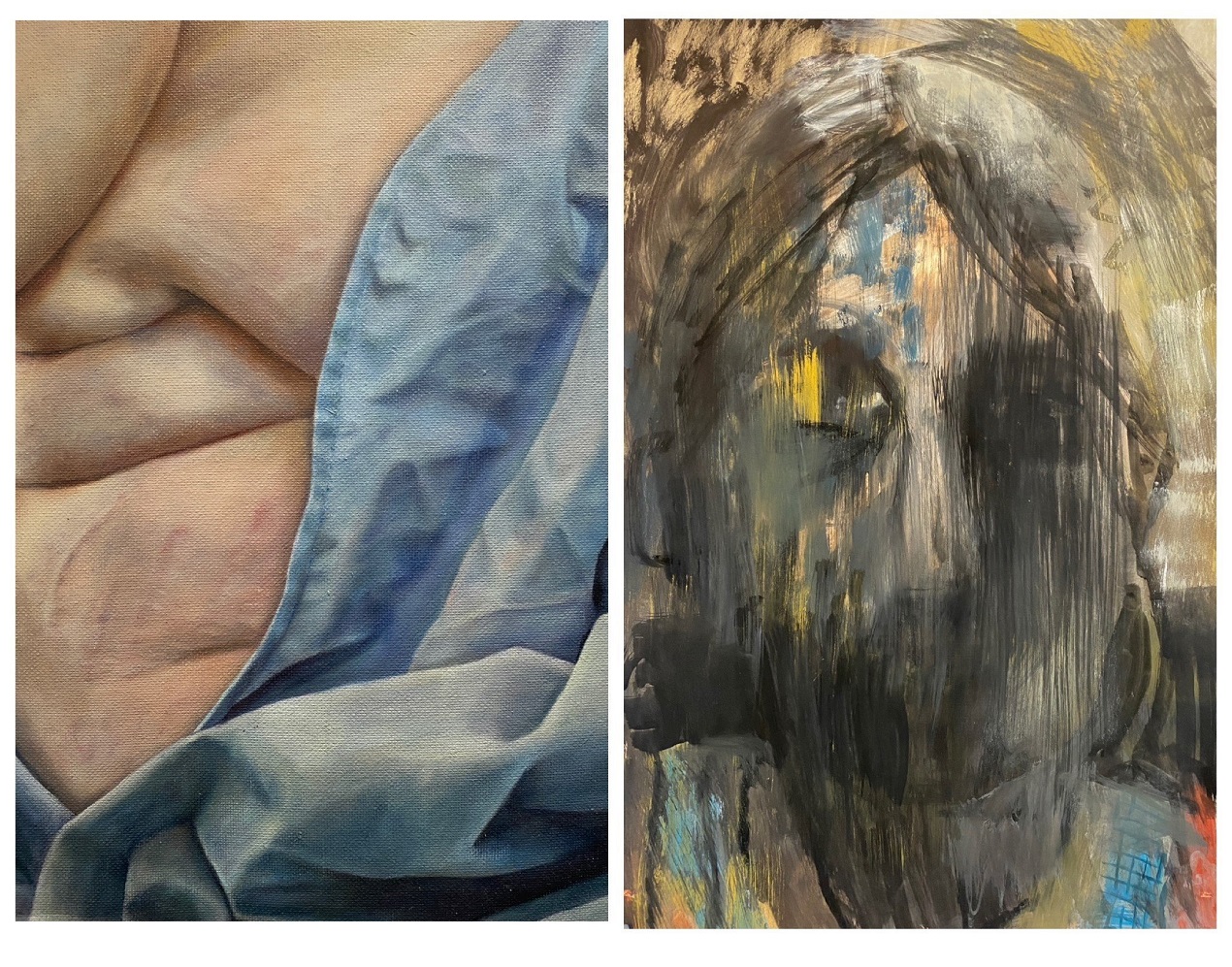
"Artists and Letters, Pictures and Words" is a compelling exhibition that celebrates the comprehensive holdings of Colin McCahon’s art and archives at the Hocken Collections. Accompanying the show, and directly linked to its curatorial development, is Peter Simpson’s book Dear Colin, Dear Ron: The Selected Letters of Colin McCahon and Ron O’Reilly, published by Te Papa Press, 2024, with essays by Matthew O’Reilly and Finn McCahon-Jones.
Dear Colin, Dear Ron comprises 400 letters between McCahon and his friend, librarian Ron O’Reilly. Written from 1944 to 1981, the correspondence between McCahon and O’Reilly spans McCahon’s career, and includes engagement with many important works over decades of the artist’s practice. Some of these conversations can be witnessed in carefully laid-out display cases and alongside the works in question, aiding and enriching their interpretation.
As a premise for this show, the letters between McCahon and O’Reilly contextualise the visual works and provide an opportunity to explore generative connections across the Hocken Collections. Included in this exhibition is an offshoot selection of artworks, letters and archival materials, a network of McCahon’s contemporaries, and others, referencing a range of artistic relationships through letters, pictures and words.

In this two-person exhibition, Ōtepoti-based artists Eliza Glyn and Sarah McGaughran present distinct approaches to the genre of self-portraiture. Glyn’s portraits consist of overlaid figures (the faces of her mother, father or the philosopher Jiddu Krishnamurti, for example, are superimposed upon her own). McGaughran’s paintings feature the body, in small abstracted compositions of the artist’s draped torso. McGaughran’s contribution includes a large-scale sculptural piece, formed from the casts of clay landscapes, and fastened together to create a swath of skin-like material that drapes out the window and on to the building’s exterior wall.
In the show’s exhibition essay, Pennie Hunt reflects on the transformative qualities of artists’ shared concern with the complexities of self-image. "Anhedonia" is associated with the absence of interest in or enjoyment of life’s experiences, casting a troubled shadow on the theme of the exhibition. What seems more apparent in the work are courageously personal accounts of lived experience.
A sound work by Perry Buoy (McGaughran’s musical moniker) titled Sublimate accompanies the visual works. This ambient electronic work plays in the low registers. These deep notes have somatic effects (you can feel the music in your body). For the artist, this work appears to be liminal, in that it inhabits the space between internal experience and the physical world.

(Brett McDowell Gallery)
Comprising the entire exhibition, "In Praise of Historical Determinism I, II and III," consists of three prints: two framed lithographs and an unframed screen print bolstered by wooden strips on the reverse side and displayed as a freestanding piece against the wall.
Made in the early-mid 1970s, this work is considered one of United States-based Richard Tuttle’s early experimental prints at the boundary of printmaking and object art. Tuttle’s work was controversially minimal and panned by critics at the time, but the artist became a key player in the development of early contemporary art.
The title of this work refers to the idea of historical determinism; this means that, generally speaking, historical events are determined by prior events and can be inevitable. Poetically rendered, the artist considered this work as "an attempt to say what history is, even as a suggestion of repetition, which we are determined by and which can be expressed with a print" (Richard Tuttle in correspondence with Christina von Rotenhan, 2014).
At close range, delicately punctuated repetitions of soft blue overlapping lines make up the colour components of the first two prints, with three rows of colour in the first and an L shape in the second. The third panel of the work, bright yellow and resting on the floor, brings the work into the room.
By Joanna Osborne












